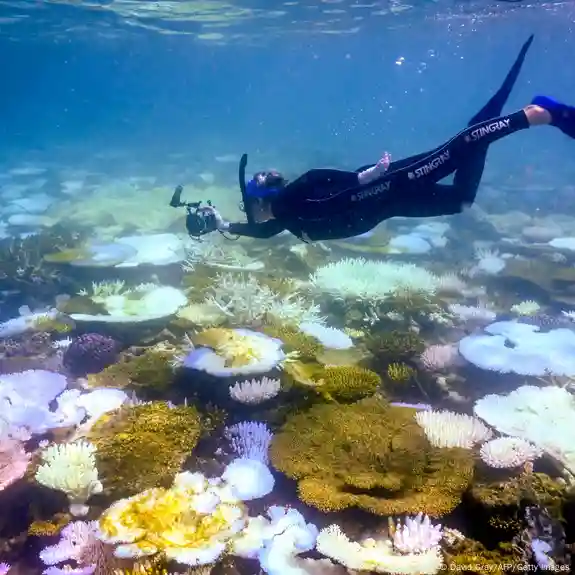The reef still retains more coral cover than many reef systems globally and researchers say it is ‘still worth fighting for.’

The Great Barrier Reef suffered its largest annual decline in live coral over the past year, according to a report released Wednesday by the Australian Institute of Marine Science.
Australian scientists monitoring the reef documented the devastating effects of a mass coral bleaching event that occurred in early 2024.
“The [Great Barrier Reef] experienced unprecedented levels of heat stress, which caused the most spatially extensive and severe bleaching recorded to date,” the report found.
Australian reef may be reaching tipping point
Surveys of the world’s largest reef found that two of its three regions recorded the steepest coral decline since monitoring began in 1986.
According to the report, the northern and southern regions of the Great Barrier Reef were hit hardest, with coral cover dropping by between one-quarter and one-third after several years of steady growth.
Show additional content?
This content is part of the text you are currently reading. The provider Instagram provides this content and may collect your usage data directly when you click “Show content”.
Always show content from Instagram.
Scientists documented the most widespread bleaching event since monitoring began nearly 40 years ago, driven by record-high ocean temperatures in 2024 that triggered “unprecedented levels of heat stress.”
“We are now seeing increased volatility in the levels of hard coral cover,” said Mike Emslie, head of the institute’s long-term monitoring program.
“This is a phenomenon that emerged over the last 15 years and points to an ecosystem under stress,” he added.
Climate change causing intolerable heat stress for coral
Emslie said the primary cause of the decline in coral cover is climate change.
“We have seen coral cover oscillate between record lows and record highs in a relatively short amount of time, where previously such fluctuations were moderate,” he added.
The reef stretches for about 1,500 miles (2,400 kilometers) off the coast of Queensland in northeastern Australia.
Despite the damage, Emslie said the reef remains an “amazing place.”
“It is still worth fighting for. We can’t throw our arms up and give up,” he said.
Edited by: Louis Oelofse
DW News


